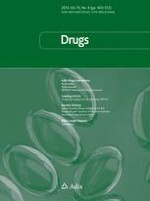01-12-2003 | Current Opinion
What is the Role of NSAIDs in Pre-emptive Analgesia?
Published in: Drugs | Issue 24/2003
Login to get accessAbstract
NSAIDs inhibit the cyclo-oxygenase enzymes, and decrease peripheral and central prostaglandin production. In addition to reducing the inflammation that accompanies tissue injury, decreasing prostaglandin production attenuates the response of the peripheral and central components of the nervous system to noxious stimuli. Such a reduction in the response to pain can reduce the peripheral and central sensitisation induced by noxious stimuli, and reduce the pain experienced in response to subsequent noxious stimuli. These properties would seem to make NSAIDs ideal drugs to use in a pre-emptive fashion, where analgesics are administered prior to a noxious stimulus, such as surgery, with the expectation that reduction in peripheral and central sensitisation will lead to a decrease of pain.
However, the available perioperative trials of pre-emptive NSAID use have yielded modest or equivocal results, and these may be due, in part, to controversy associated with the definition of pre-emptive analgesia and how to conduct the corresponding clinical trials. Although NSAIDs may have a limited ability by themselves to induce a pre-emptive analgesic effect, the available trials suggest how the perioperative use of these drugs may be made more effective. It is expected that NSAIDs will play an increasing role in multimodal analgesia and pain relief in general.





